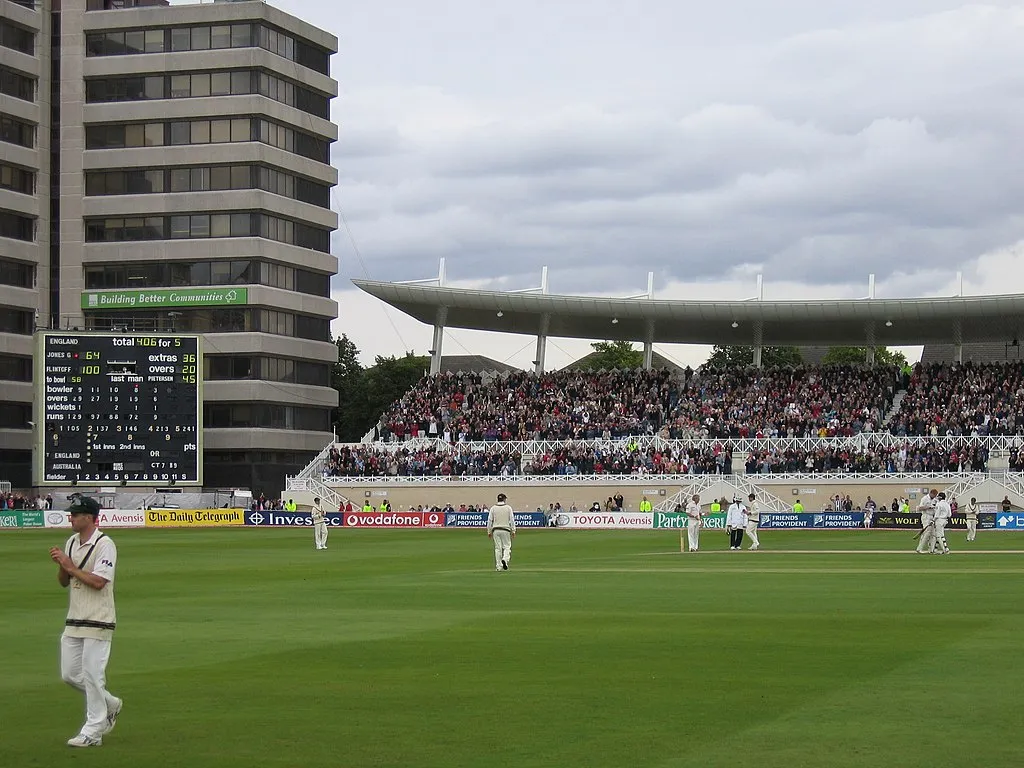By the time that England returned to Australia in the British winter of 1936/37, much of the mutual dislike between the two sides caused by the Bodyline series had eased, even if not entirely forgotten on the Australian side, who were now captained by Don Bradman.
Australia won the series, and retained the Ashes, becoming the first team to win a five-match series having lost the first two.
England started strongly in the first Test, played at Brisbane in December. Winning the toss and batting first, they made 358, Maurice Leyland making 126 and Charlie Barnett 69. In reply, Jack Fingleton scored exactly 100, and there was a half century for Stan McCabe, but 6-41 from Bill Voce saw the home side bowled out of 234.
In their second innings, captain Gubby Allen made 68 as England were dismissed for 256, but Australia were then routed for just 58, Voce with 4-16 and Allen 5-36. Bradman fell for a two-ball duck. England won by 322 runs.
The second Test in Sydney resulted in another emphatic victory for England, built on their first-innings batting display, when they declared on 436/6. Wally Hammond made an unbeaten 231. Bradman then scored his second successive duck, and the rest of his team could only manage 80 between them, as Voce took four wickets and Allen three.
Following on, Australia did substantially better, McCabe with 93 and Fingleton with 73, while Bradman rediscovered his form with 82. It was not enough, however, and Australia were dismissed for 324, meaning England had won by an innings and 22 runs.
The tide though began to turn in the third Test, in Melbourne, although when Australia were 122/5 in their first innings it did not look so promising. But 63 from McCabe helped them reach 200/9.
Bradman then declared after a burst of rain. England, caught on a sticky wicket, struggled to reach 76/9 before Allen declared.
Batting again, though, Bradman made 270, an innings rated by Wisden in 2000 as the greatest ever in Test cricket. With Fingleton also making 135, Australia were able to make 564, setting England the notional target of 689 to win.
Leyland made an unbeaten 111, but it was in vain as England were dismissed for 323, losing by 365 runs.
The fourth Test was at Adelaide, which had seen such rancour on the previous tour. Australia again won the toss and batted, McCabe top-scoring with 88 as they were all out for 288. Charlie Barnett than made 129 and Les Ames 52, as England took a first-innings lead by finishing on 330.
But Bradman again rose to the occasion in the second innings, with his second double century of the match, making 212 this time out of 433. Chuck Fleetwood-Smith them took 6-110 as England were bowled out in their second innings for 243. Australia had won by 148 runs and levelled the series.
Bradman, though was not finished yet. In the fifth Test, in Melbourne, he made 169 in Australia’s first innings, while McCabe scored 112, Jack Badcock 118, and Ross Gregory 80. They helped Australia close on 604. Then, despite 83 from Joe Hardstaff, England were bowled out for 239, Bill O’Reilly with 5-51.
Following on, England were bowled out for 165, losing by an innings and 200 runs.

